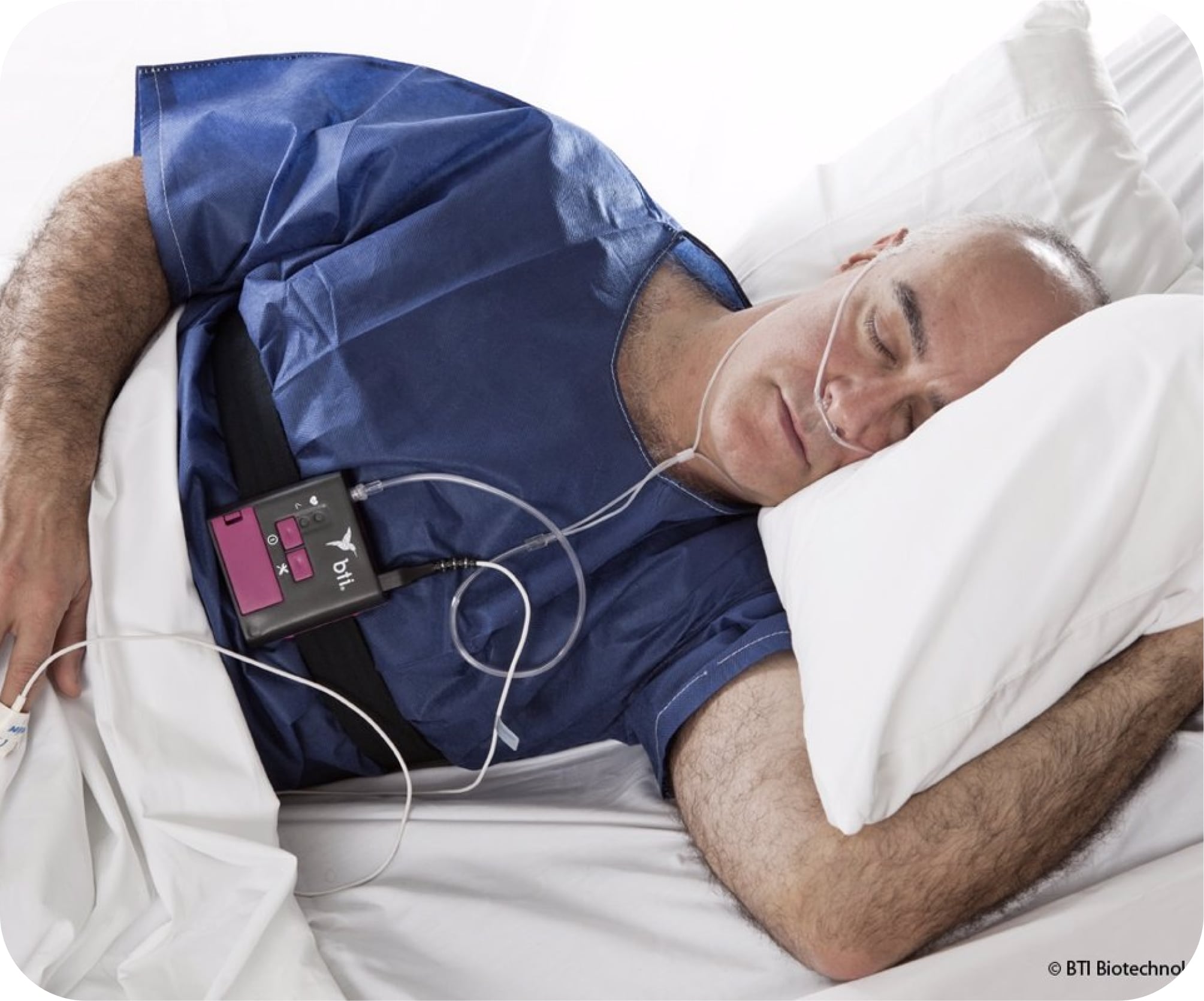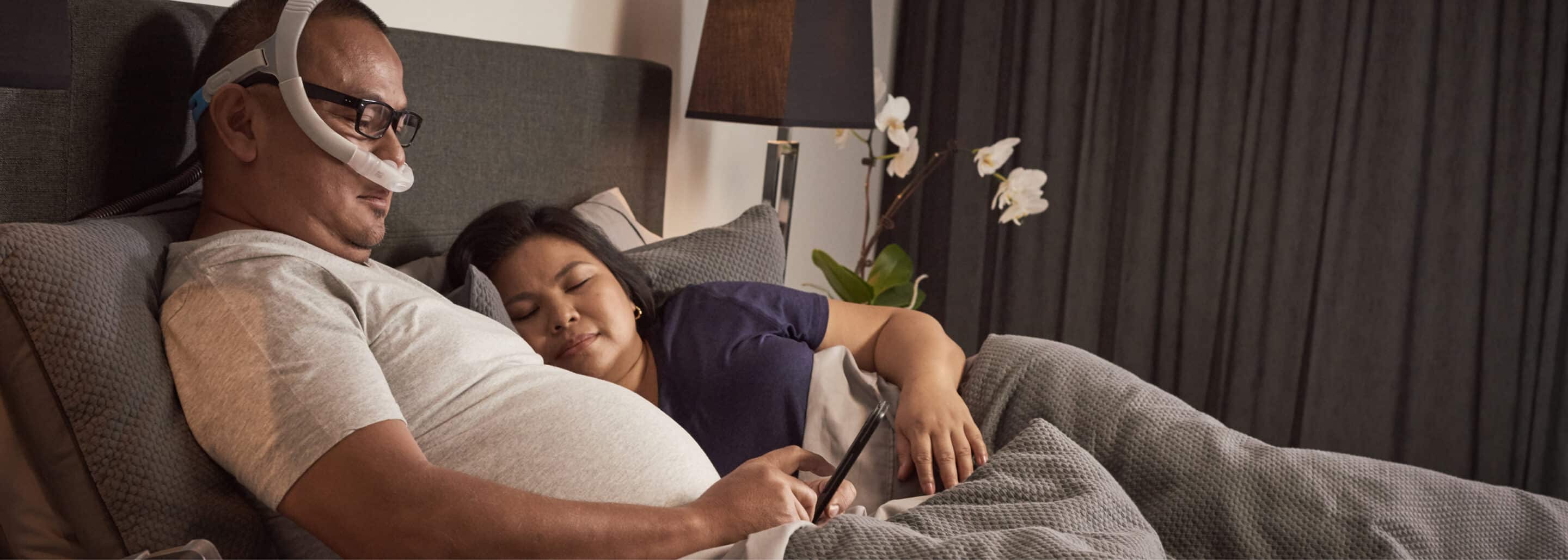Getting a good night’s sleep is as important to your overall health as physical activity and a balanced diet.
If you have trouble sleeping, snore (or the person sleeping next to you says they snore) or suspect you have sleep apnea, it’s important to take these signs seriously and consult your doctor.
Polysomnography
This is carried out in a hospital center, with specific technical staff. The patient must stay overnight at the center; it is a more complete sleep study. This type of test assesses and measures the cycles and stages of sleep by recording the signals collected by the placement of systematically placed electrodes. They allow us to obtain data on heart rate, respiratory flow, blood oxygen saturation, thoracic mobility (respiratory effort), brain and eye activity, leg movements, etc. This type of test is used to look for other sleep disorders in addition to apnea.
During this type of study, you will need to stay overnight at the center, so it is advisable to be comfortable and bring everything you use in your normal sleep routine, including pajamas and toiletries.


Respiratory Polygraphy
The sleep study can be performed at home.
The home sleep study is similar to that performed in a laboratory or hospital, with the added comfort and convenience of being in your own home.
Simple, quick and easy to use, our ApneaLink Air equipment reports apneas, hypoapneas, flow limitation, snoring, blood oxygen saturation and breathing patterns within the record. All of these parameters will tell us if you have obstructive sleep apnea and, if so, how severe it is.
All our studies are validated by sleep apnea pulmonologists.
ApneaLink Air is scientifically validated for the screening of sleep apnea patients and validated by the EC.
The main “score” obtained from a sleep study is called the Apnea-Hypoapnea Index. The AHI score indicates the number of apneas and hypo apneas experienced per hour during the sleep study. In addition, other parameters that are also important for diagnosis, such as snoring and oxygen saturation, are measured.
| Severity of sleep apnea | AHI (per hour) |
|---|---|
| Normal | Less than 5 |
| Slight | from 5 to 15 |
| Moderate | from 15 to 30 |
| Grave | more than 30 |
Request your home sleep study by filling in the following form
If you would like to undergo a sleep study, please fill in the contact form so that our clinical department can contact you as soon as possible and explain the test in detail.




